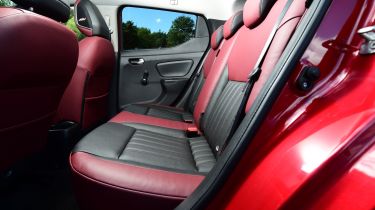Nissan Micra hatchback (2016-2022) review - Practicality & boot space
Plenty of space for passengers and luggage, but details could be better thought through
The Micra has always been a small car – but never one that lacked practicality. The new Micra builds on the established recipe, acknowledging that motorists today spend a lot more time in their cars than ever before.
Nissan Micra interior space & storage
To fulfil this brief, the new Micra has far more space in the front and back than was previously the case. Front-seat occupants feel anything but hemmed-in, with none of the claustrophobic feeling around your feet that can plague smaller cars. And as mentioned before, shoulder room is particularly generous.
In the back, you can see the impact of that sleek roofline as the rear headroom is a little more limited than in the front. It’s still adequate for all but the tallest passengers, which is quite impressive by supermini standards. Unusually, the feeling of space is enhanced more by the amount of kneeroom and children will be more than happy in the back – the only thing that might impede their enjoyment is that the relatively narrow rear windows don’t give smaller people the easiest view out.
Boot space
The headline figure when assessing boot space is its total volume, and the Micra’s 300-litre boot falls slightly behind that of a Volkswagen Polo or Renault Clio – on paper at least. Small details like the flimsy, lightweight parcel shelf and its cheap string suspension remind you that your money has clearly been spent on the mechanical and styling side of things, rather than the finish of the luggage compartment.
It’s also a shame that there’s a pronounced step in the boot floor if you choose to lower the rear seatbacks to carry larger items. Although doing so increases the overall capacity dramatically, the step prevents large, heavy items from being slid forwards into the boot. Additionally, an intrusively high loading lip is a little tricky to lift them over in the first place.
Towing
Both turbocharged petrol engines can haul a braked trailer weighing up to 1,200kg or an unbraked one weighing up to 555kg. The 1.5-litre diesel can manage a 1,170kg load, while the 1.0-litre IG 71 petrol engine has lower trailer towing limits, at 900kg braked and 510kg unbraked.









